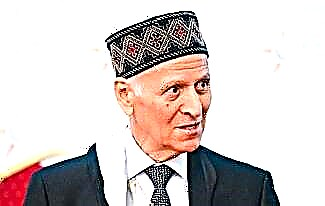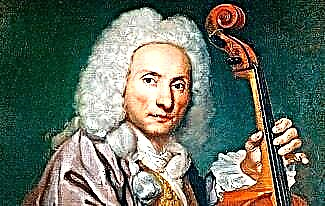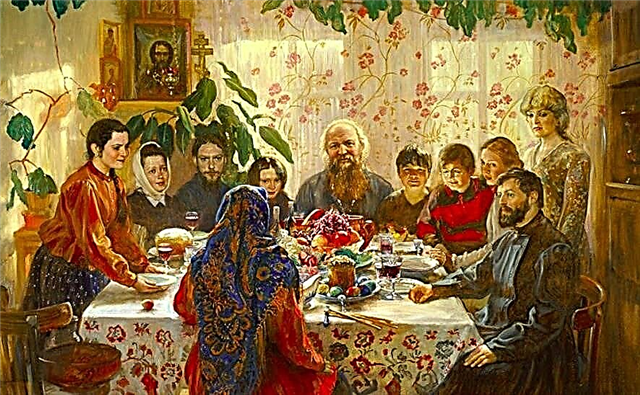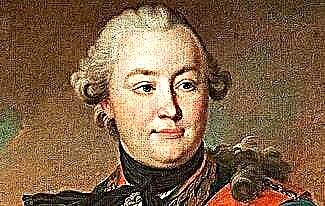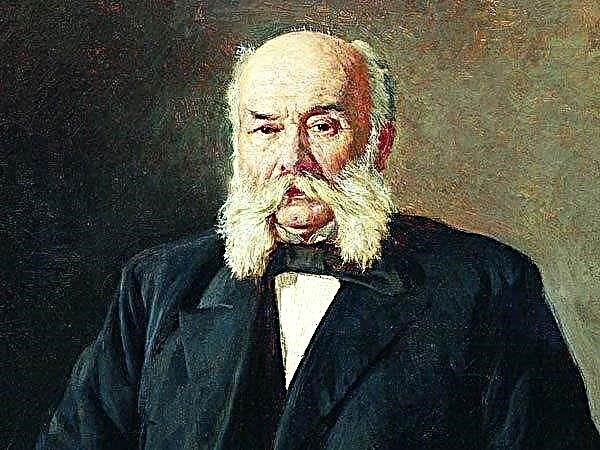The white-stone Rostov Kremlin is familiar to most of the inhabitants of our country. It was here that scenes from the popular film "Ivan Vasilyevich Changes His Profession" were filmed. Although the scenes with old Moscow feature the Moscow Kremlin, the shooting was carried out in similar chambers and covered passages of the Kremlin in Rostov. This city is located in the Yaroslavl region, formerly known as Rostov the Great.
The history of the construction of the Rostov Kremlin
There is still debate over whether the building in Rostov has the right to bear the official name "Kremlin". Such medieval buildings, by their definition, performed a defensive function. Their construction had to be carried out in compliance with the fortification requirements regulating the height and thickness of the walls, the location of loopholes and watchtowers. In the Rostov Kremlin, many of the elements do not meet the required defensive standards, but rather play a decorative role. This situation arose from the very beginning of construction.
The fact is that the building was conceived not as a defensive fortress, but as the residence of Metropolitan Ion Sysoevich, head of the bishop's department in Rostov. Vladyka himself supervised the development of the project and the construction process from start to finish.
So in 1670-1683, the Metropolitan (Bishop's) courtyard was built, imitating the biblical Garden of Eden with towers around the perimeter and a pond in the middle. Yes, there are also reservoirs - the buildings were built near Lake Nero, on a hill, and artificial ponds were dug in the courtyards.

The courtyard served as a place of residence and service of the highest spiritual authority for over a century. In 1787, the bishops relocated to Yaroslavl, and the architectural ensemble, in which the warehouses were located, gradually fell into disrepair. The clergy were even ready to scrapped it, but the Rostov merchants did not allow destruction and restored it in 1860-1880.
After that, Nikolai Alexandrovich Romanov, the future Russian emperor, took the Metropolitan Court under his patronage and initiated the opening of a state museum there. The Rostov Kremlin Museum-Reserve was opened for visiting in 1883. Today it is a cultural heritage site of Russia.
The current state of the Rostov Kremlin
In recent years, restoration of many objects of the Rostov Kremlin has been actively carried out. Somewhere it has already been completed, so visitors can see the restored frescoes, walls and interior items. In some buildings and structures, repairs are still planned. The entire architectural ensemble of the museum-reserve is financed from the federal budget, with the exception of the Assumption Cathedral, which has been the property of the Orthodox Church since 1991.
Behind the stone walls with eleven towers are: ancient chambers, churches, cathedral, bell towers, outbuildings. They are divided into three zones, each of which has its own courtyard. The central zone is the Bishop's courtyard surrounded by churches with residential and outbuildings. Northern part - Cathedral Square with the Assumption Cathedral. South zone - Metropolitan Garden with a pond.
What to see in the Kremlin?
Excursions around the Rostov Kremlin are available for everyone. Some buildings are free to enter, but most exhibitions and venues can only be visited after purchasing an admission ticket. The following excursions are in greatest demand among city guests:
- Assumption Cathedral... The five-domed church was built in 1512 on the remains of the Leontief cave side-altar, which still houses the relics of St. Leonty, Bishop of Rostov and Suzdal. In this side-chapel in 1314, a baby was baptized, who later became Sergius of Radonezh. The reconstruction of the temple was not completely carried out, the frescoes are only partially preserved. The temple is active, in architecture it is similar to the Assumption Cathedral in Moscow. Admission is free, free, through the Cathedral Square.
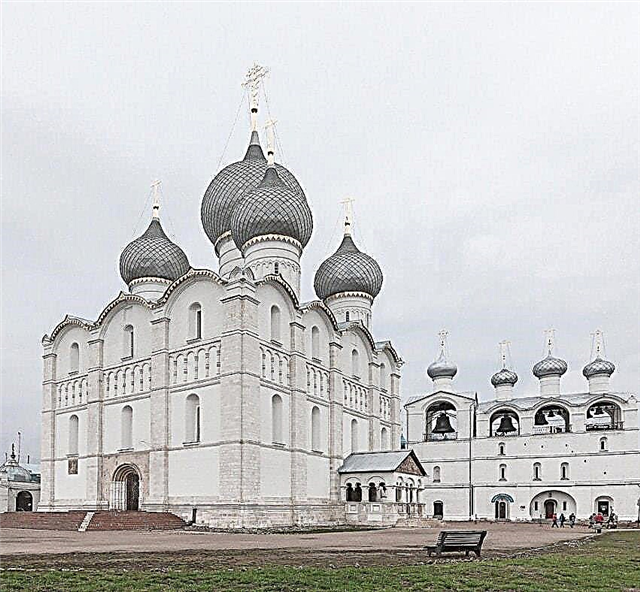
- Belfry... The bell tower was built in 1687. All 15 bells have been preserved in their original completeness. The largest bell on the belfry is "Sysoi", it weighs 32 tons, "Polyeleos" - 16 tons. The rest of the bells weigh less; their names are very original: "Goat", "Ram", "Golodar", "Swan". The rise to the tower is paid, but visitors are not allowed to ring the bells. A souvenir shop of black-polished ceramics is located at the base of the building. In the belfry itself is the Church of the Entry into Jerusalem.
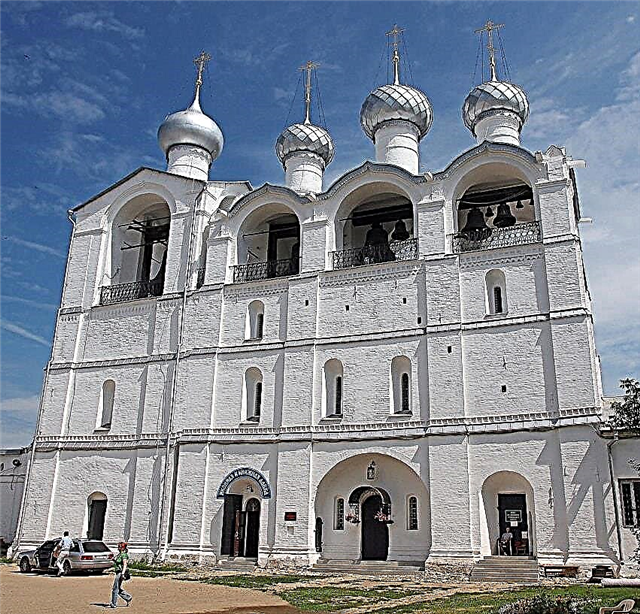
- Resurrection Church (Gateway)... Built around 1670 over two gates, travel and pedestrian, which open the way to the Bishop's court. When passing through the gates, they purchase a ticket for visiting the Bishops' court and its churches.
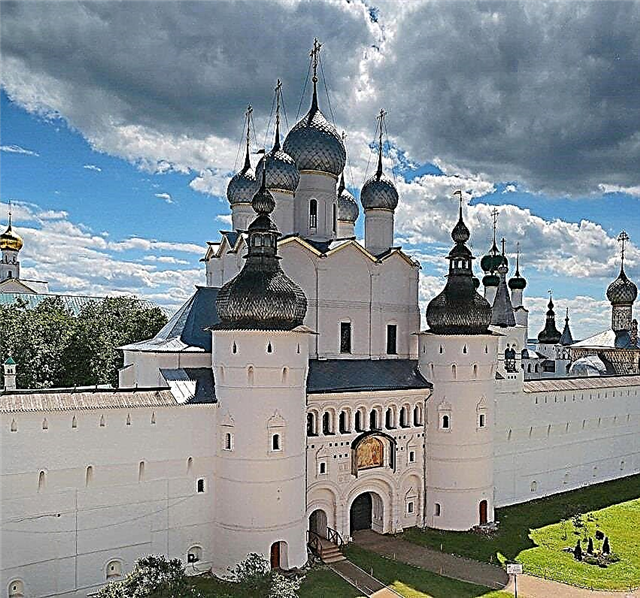
- House in the cellars... A former residential building, on the ground floor of which there were household cellars. Now the "House on Cellars" has become a hotel of the same name, where everyone who wants to spend the night staying within the boundaries of the Rostov Kremlin stay. The level of comfort in the hotel is not high, but guests have the opportunity to stroll through the empty Kremlin, and in the morning - wake up to the ringing of bells.

- Metropolitan Garden... The description of the Rostov Kremlin would not be complete without mentioning this resting corner. You can walk in the garden, relax on the benches. The garden is especially beautiful in spring, when apple trees and other trees are blooming.
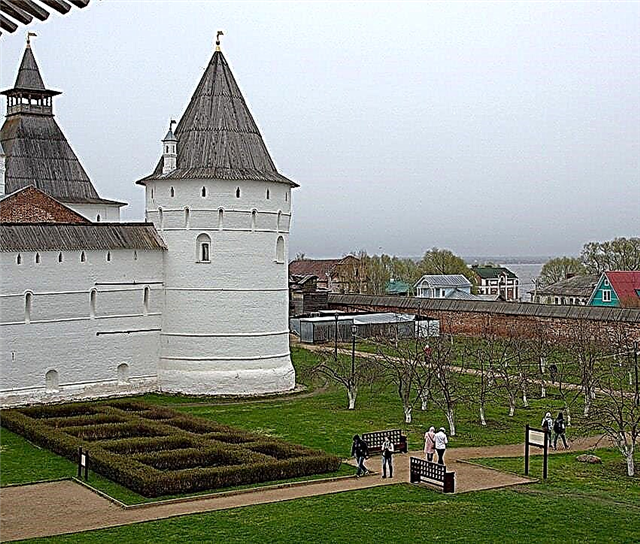
The above are the most popular excursions on the territory of the Rostov Kremlin. Do not forget to take your photo or video equipment with you to capture the views of the ancient architectural ensemble and take your photos against the background of the memorable interiors from the film by Leonid Gaidai.
Additional information about the Kremlin
Museum-reserve opening hours: from 10:00 to 17:00 all year round (except January 1). Tours along the walls and passages of the Kremlin are held only in the warm season, from May to October.
Museum address: Yaroslavl region, the city of Rostov (note, this is not the Rostov region). From the bus station or railway station, the way to the Kremlin takes 10-15 minutes on foot. Its towers and gilded domes are visible from any outskirts of Rostov, so it is simply impossible to get lost along the way. In addition, any city dweller can easily tell you where the main attraction of the city is.
At the ticket office of the Museum-Reserve, you can purchase both a separate ticket to visit one building or exposition, and a single ticket "Crossings along the Kremlin walls". Prices for individual expositions are low, from 30 to 70 rubles.
We recommend looking at the Tobolsk Kremlin.
Workshops on bell ringing, on making museum postcards, on painting with Rostov enamel cost from 150 to 200 rubles.
The hotel "House on Cellars" was opened, where tourists stay for any time, from one night to several days. Rooms with private facilities are designed for one to three people. Meals are provided in the Sobranie restaurant, open to all comers in the premises of the Red Chamber. The restaurant serves classic Russian cuisine, including fish and meat dishes. It is possible to order a banquet in the Kremlin restaurant for a wedding or anniversary.






